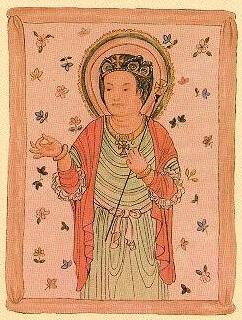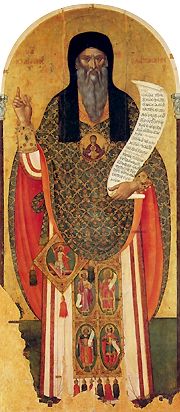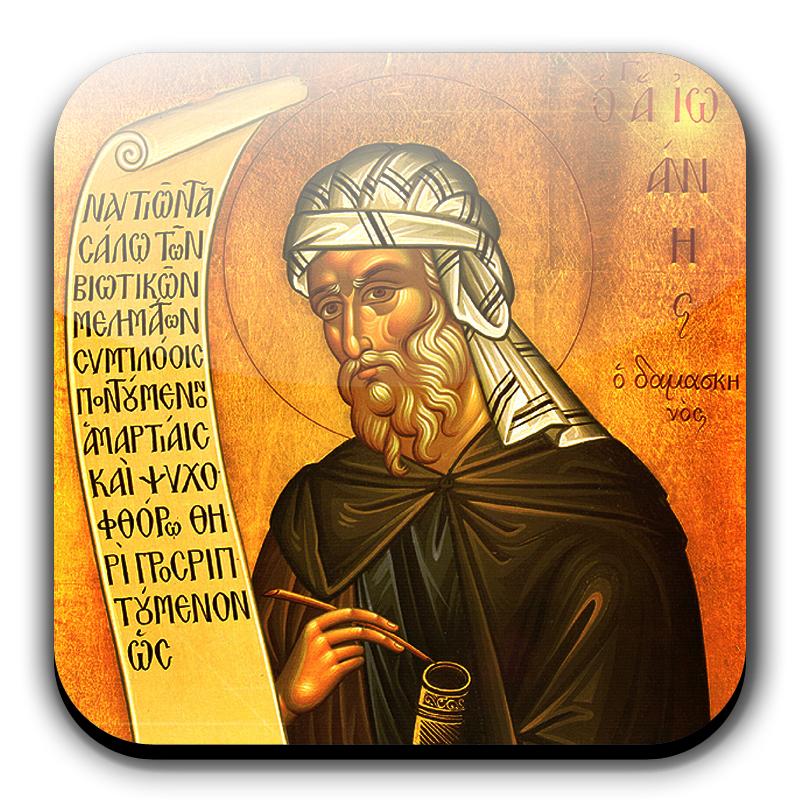Honestly, growing up with a grandmother who grew up in a sect of Islam AND seeing this discussion often within Black culture (since we have had Muslims and Christians experiencing slavery in America since its founding), a lot of things can feel like it takes awhile for others to become aware of where many never saw any issue. I've seen and met many growing up in Islam who clarified what they meant when it came to things like Jesus being God and the Spirit of God working with him (in raising him from the dead/doing miracles) - and they were very direct noting the Qur'an itself never condemned the Crucifixion. Of course, for many saying Islam does so, there are also Christians saying Jesus never condemned same sex unions in the Bible ...but that is an argument from silence. It's the same in the Qur'an when it comes to the Death/Rise of Christ. I am thankful for this awesome video lecture series investigating the evidence for the crucifixion of the prophet Jesus, looking at what the Qur'an says, the Injil's account and other historical reports.
Where many get confused is when others see people say that they did not kill Christ - and from the perspective that Jesus IS life and LIFE ITSELF could not be defeated, they're right. Jesus did not die spiritually and his physical body was sacrificed when he laid down his life (John 10) and rose again. This is something that even Nestorians debated extensively among themselves when talking on how the nature of Christ could experience death and yet be above it.
Concerning Al-Nisa: 155-158: ‘And so for breaking their pledge, for rejecting Allāh’s revelations, for unjustly killing their prophets, for saying: “Our minds are closed” - No! Allāh has sealed them in their disbelief, so they believe only a little - and because they disbelieved and uttered a terrible slander against Mary, and said: “We have killed the Messiah, Jesus, son of Mary, the Messenger of Allāh.” They did not kill him, nor did they crucify him, though it was made to appear like that to them; those that disagreed about him are full of doubt, with no knowledge to follow, only supposition: they certainly did not kill him - Allāh raised him up to Himself. Allāh is almighty and wise.’
I’ve spent a while learning (and in some cases re-learning) what the Qur’an and others have to say about the crucifixion. I’ve read extracts of the tafâsîr (interpretations of the Qur’an) of Wahb Ibn Munabbih; Ṭabarî; Makkî Ibn Abi Ṭâlib; Qurṭubî; Ibn Kathîr; Suyûṭî; Ṭabâṭabâ’î ; and Jazâ’irî. All of them (apart from Ṭabâṭabâ’î) are saying that Yeshua (ʿalayhi as-salām) was not crucified, but that another was made to resemble him - and to take his place. It is not possible to justify, from Al-Nisa: 155-158, any notion of a substitute.
There are those who say that the Qur’an is denying only that the Jews crucified Yeshua. Not so. The Qur’an is saying that Yeshua was not crucified (killed) at all - not by the Jews, and not by anyone else.
Some agree with this; but only to argue that it was Allāh (subḥānahu ūta'āla) Himself who did the killing. In support of their argument they quote: ‘Those who say: “Allāh is the Messiah, the son of Mary,” are defying the truth. Say: “If it had been Allāh’s will, could anyone have prevented Him from destroying the Messiah, son of Mary, together with his mother and everyone else on earth? Control of the heavens and earth and all that is between them belongs to Allāh: He creates whatever He will. God has power over everything.’ (Al-Ma’ida: 17); and this: ‘No soul may die except with Allāh’s permission at a predestined time.’ (Al‘Imran 145); and this: ‘The Father loves me, because I lay down my life in order to take it up again. No one takes it from me; I lay it down of my own free will.’ (John 10: 17-18); and even this: ‘. . . it was the Lord's will to crush him . . .’ (From Isaiah 53: 1-12).
Comment:
The Qur’an uses two different terms when referring to death: ‘mawt’ and ‘tawaffâ’. The former is the Qur’an’s usual term for death.
Mawt:
A major point of distinction between ‘mawt’ and ‘tawaffâ’ is that only the former is associated with murder or manslaughter (‘qatala’). We see examples of the use of ‘qatala’ (and its derivatives) in the following: ‘And Pharaoh said: “Leave me to kill Moses (aqtulu Musa) - let him call upon his Lord! - for I fear he may cause you to change your religion, or spread disorder in the land.”’ (Ghafi: 26); and again: ‘They were struck with humiliation and wretchedness, and they incurred the wrath of Allāh because they persistently rejected His messages and killed (yaqtuloona) prophets contrary to all that is right. All this was because they disobeyed and were lawbreakers.’ (Al-Baqara: 61); and again: ‘Allāh has certainly heard the words of those who sneer, “So Allāh is poor, while we are rich”. We shall record everything they say – as well as their killing (wa qatlahum) of prophets in defiance of all that is right – and We shall say to them: “Taste the torment of the scorching fire.”’ (Al‘Imran: 181). There are several others verses where derivatives of ‘qatala’ are used when describing the death of prophets.
With ‘mawt’ comes the natural decomposition of the body; its return to dust. There is no return from ‘mawt’, save on the Day of Resurrection.
As far as I can tell, derivatives of ‘mawt’ and ‘qatala’- used as expressions of normal death when referring to the demise of all other prophets - are never used for Yeshua. The term used to describe his departure is a derivative of ‘tawaffâ’. This appears to make the manner of his leaving something special.
Tawaffâ:
‘Tawaffâ’ invokes the notion of completion and fulfilment. The Qur’anic image of death through ‘tawaffâ’ is quite different from that of ‘mawt’. For a start, ‘tawaffâ’ is never associated with ‘qatala’; instead, it is juxtaposed with ‘nawm’ (sleep). On two occasions sleep is described as a repeated nightly death (‘tawaffâ bil layl’): ‘It is He who calls your souls back by night, knowing what you have done by day, then raises you up again in the daytime until your fixed term is fulfilled. It is to Him that you will return in the end, and He will tell you what you have done.’ (Al-An‘am: 60); and again: ‘Allāh takes the souls of the dead and the souls of the living while they sleep – He keeps hold of those whose death He has ordained and sends the others back until their appointed time – there truly are signs in this for those who reflect.’ (Al-Zumar: 42).
In the Qur’an the term ‘an appointed time’ is used in a general sense for the cycles of the sun and moon: ‘He makes the night merge into the day and the day into the night; He has subjected the sun and the moon - each runs for an appointed term.’ (Fatir: 13); for the waiting period associated with divorce: ‘If you are in doubt, the period of waiting will be three months for those women who have ceased menstruating and for those who have not (yet) menstruated; for the waiting period of those who are pregnant will be until they deliver their burden: ‘Allāh makes things easy for those who are mindful of Him.’ (Al-Talaq: 4); for the time that a widow has to wait before she can remarry: ‘If any of you die and leave widows, the widows should wait for four months and ten nights before remarrying.’ (Al-Baqara: 234); and when contracting the period of a loan: ‘You who believe, when you contract a debt for a stated term, put it down in writing: have a scribe write it down justly between you.’ (Al-Baqara: 282).
The term is also applied, of course, in a particular sense to one’s predestined time for living.
It is worth noting that whenever a verse includes a reference to a person’s predestined death the term used is always ‘mawt’. There are no exceptions. This suggests that when we reach our ‘appointed time’ we experience, not ‘tawaffâ’, but ‘mawt’; with no chance to return to life, save at the Day of Resurrection: ‘No soul may die except with Allāh’s permission at a predestined time. If anyone strives for the rewards of this world, We will give him some of them. If anyone strives for the rewards of the Hereafter, We will give him some of them: We will reward the grateful.’ (Al‘Imran: 145).
There is no notion of physical damage or decomposition in ‘tawaffâ’. Likewise, there is no notion of a ‘non-return’ (as there is in ‘mawt’). It might be better, therefore, to avoid understanding and translating ‘tawaffâ’ as ‘death’; or ‘to die’; or ‘to cause to die’. People return from ‘tawaffâ’ every night of their lives. What makes the last experience of ‘tawaffâ’ non-returnable - as when someone dies in their sleep - lies not in tawaffâ own nature, but in its combination with ‘mawt’.
There is nothing in the Qur’an to support the claim that Allāh (subḥānahu ūta'āla) killed Yeshua; and nothing to justify the notion that he killed himself. But what are we to make of the words: ‘Allāh said: “Jesus, I will take you back and raise you up to Me.”’ (Al‘Imran: 55).
The word ‘take’ in ‘I will take you back’ translates ‘mutawaffi’. Its root, of course, is w-f-y; the root of tawaffâ (and not that of mawt). Some mufassirûn interpret ‘mutawaffi’ to mean that Yesuha died, and was taken in death. Other mufassirûn say that this interpretation is problematic, since – as we have seen - ‘tawaffâ’ is not the same as ‘mawt’.
It is for this reason, perhaps, that these same mufassirûn interpret ‘mutawaffi’ as a kind of sleep; since the Qur’an uses the same root (w-f-y) for sleeping, and - as we have seen - presents sleep as a kind of death.
The word ‘raise’ in ‘and raise you up to me’ translates ‘rafa‘a’ (‘to raise’) rather than ‘ba‘atha’, which is used elsewhere to mean ‘to resurrect’ after death. Commenting on this, Abu Musa al-Ash'ari writes: ‘There is a consensus among the community of the faithful that the Prophet Jesus (as) was raised alive to the heavens.’ (‘al-Ibana 'an Usul al-Diyana); and Hasan Basri Cantay writes: ‘Allah raised and lifted up the Prophet Jesus (as) in both body and soul.’ (Tafsir of the Qur'an); and Imam ibn Taymiyya writes: ‘The verse "He raised him to His Presence" … explains that the Prophet Jesus (as) was raised in both body and soul.’ (Majmu' Fatawa).
Citing both Al‘Imran 55 and Al-Nisa' 157-158, Zahid al-Kawthari claims that the ascension of Yeshua is beyond doubt: ‘That is because the basic meaning of the word rafa'a in the verses is transportation from below to above. There is no element here that could be used to interpret the verses metaphorically. Therefore, there is no evidence for seeking to produce a meaning in the sense of ascension in honour and station.’ (Nazra 'Abira fi Maza'im; page 93).
The argument that Yeshua was raised alive - both body and soul - is strengthen by the use of the word ‘bal’ that appears in Al-Nisa 157-158. By way of explanation, Sheikh al-Islam Mustafa Sabri writes:
‘If the term ‘bal’, which appears in Surat Al-Nisa' 158 and which I have translated as "on the contrary," comes after a sentence expressing a negativity, then, according to the rules of Arabic linguistics, the sentence following it must mean the exact opposite of the one preceding it. The opposite of death is life. This is a requirement of the rules of linguistics. If we say that "the ascension here is a spiritual one" and "the Prophet Jesus (as) died in the normal sense," then we are violating that rule. In that case, the ascension following the expression "on the contrary" would not represent the opposite to the verbs of "killing" and "crucifying" in the negative sentence preceding it. That is because it may be possible for a person to be killed and for his or her soul to rise to the skies. Otherwise, this term would be meaningless, and there are no meaningless terms in the Qur'an … According to those who support the thesis that the ascension is only one of the soul, the meaning of the verse is this: "They did not kill him and did not crucify him … on the contrary (‘bal’), Allah raised his station." There is no particular oratory here, let alone succinctness … No rational person could take the words "The elevator in my building raises me to the fourth floor every day," to mean that I am only raised to the fourth floor in spirit. Therefore, neither was the Prophet Jesus (as) raised only in spirit. (‘Position of Reason’; page 233).
Said Ramadan al-Buti interpreted the subject in the same way: ‘The mutual compatibility between the verses’ previous and later sections necessarily reveals a fact. For example, if an Arab says: "I am not hungry; on the contrary, I am lying on my side," this is not a correct sentence. In the same way, there is a discrepancy between the components in the sentence: "Khalid did not die; on the contrary, he is a good man." What would be correct is to say: "Khalid did not die; on the contrary, he is alive." To say: "The chairman was not killed; he is a man with a superior station in Allah's Presence" also leads to a break in meaning in the sentence, for his having a high station in Allah's Sight is no obstacle to his being killed. The term bal expresses a contradiction between the preceding and the following words. In other words, bal cancels out a previous statement. (Islamic Catechism: page 338).
The conclusion (justified in my view) is that Yeshua (ʿalayhi as-salām) did not die, but was merely removed from this dimension by the Will of Allāh (subḥānahu ūta'āla); and He knows best.





